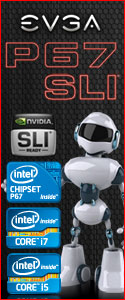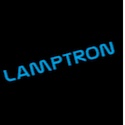Introduction
Its not often that we see any major changes in the computing industry regarding your computers memory. Every few years a new standard of memory appears that offers the next boost beyond that of the old. DDR3 is no different to this trend, offering greater speeds at voltages that are gradually getting lower.  Today sees the beginning of a new eara where one company has aimed to take this trend to a whole new level, that only a few months ago would have seemed an impossibility!
Company Background
Founded in 1989 by a select group of enthusiasts over in Taiwan; G.Skill was set from this day forth to develop and produce high quality memory for the desktop computer as we know it today. Only really hitting the mainstream as a reputable manufacturer of RAM in mid 2003; G.Skill set about developing high speed, high quality products for both the mainstream and enthusiast alike. The latest achievement has been that of the RipJaw range of high performance low voltage DDR3 designed with Intel’s i5/i7 in mind. With time comes the development and manufacture of newer and possibly greater products. Today faces no exception to this rule with the release of the ECO series of memory for the i5/i7 range of Intel CPUs. Rated to run at speeds of 1600mhz (pc12800) with latencies of 8-8-8-24 and a mind blowing low of 1.35v out of the box; the ECO series ram looks to set new standards in both the mainstream and enthusiast world. G.Skill produces some of the industry’s best memory modules however with competitive pricing towards the lower end of the pricing scale; G.Skill have products aimed at both the enthusiasts within the market and with these low prices across the board have also managed to keep the mainstream user in the loop too. To see if this new line of ultra low voltage memory can keep up with the already proven 1.65v range of already released memory we set this reviewer with the task of seeing exactly what the new G.Skill ECO is all about.
Packaging and Initial Impressions
G.Skill has not gone to too much detail with the packaging keeping it simple and unfortunately a little bland. This however should not be a problem to most as the packaging usually either gets thrown away or put into storage. One other bonus here is that with cutting out flamboyant packaging G.Skill can then pass on the savings to the consumer. The contents however are very aesthetically pleasing coming pre-installed with some very nice machined; gun metal coloured heat spreaders. These are a step up from those found on the RipJaw series but due to minimalist design may not be to everyone’s taste.
As you can see in the above images, the heat spreaders although very minimalist have had a lot of attention given to them indeed. Each flare of tribal brilliance has been ever so slightly raised rather than machined in to the surface. However it is difficult to see if these have been machined in the initial heat spreader production or if they have just been fixed on in some way at a later date. The modules rated frequency, operational voltage and timings have been printed onto a sticker and placed on the modules for reference to aid with the initial installation and set up.
Test Kit
Hardware
- Asus Sabertooth 55i motherboard
- Intel i3 530 retail processor clocked at 3.6ghz (18×200)
- Nvidia 8800gtx
- Western Digital 500GB SATA-II hard drive
- Generic DVDRW SATA unit
- OCZ Stealth Stream 400W PSU
- G.Skill RipJaw 2000mhz 1.6v (2x2gb) cl9
- G.Skill RipJaw 1600mhz 1.5-1.65v (2x2gb) cl8
- G.Skill ECO 1600mhz 1.35v (2x2gb) cl8
Software
- Windows Vista Home Premium 64bit
- Intel system drivers
- Forceware 195.62 for vista/win7 64bit
Testing Software
- Sisoftware Sandra 2009
- Everest
- WinRar Compression Utility
- cpu-z
Testing
As you may all be aware memory pricing varies across the board from manufacturer to manufacturer. Kits with low timings and higher frequencies are generally considerably more costly than kits that ship with more modest frequencies and less tight timings. The G.Skill ECO series of memory kits fall straight in the middle of the ddr3 range sporting an average latency set of 8-8-8-24 and speeds of 1600MHZ; So why the big fuss? Why is this kit so special? The answer to that falls down to one very simple little requirement, the operational voltage. At just 1.35vOLTS the ECO range of i3/i5/i7 memory kits fall in most cases a full 0.3vOLTS shy of the competition. With this reduction in voltage comes a reduction in power consumption and heat but the main reason they are so special and have generated so much interest falls to the potential that these modules may have with a little TLC and overclocking know how.
For comparison purposes a 1.65volt rated 1600MHZ G.Skill RipJaw kit has been selected as it sports identical timings and frequency to the ECO kit on test. A set of G.Skill RipJaw 2000mhz cl9 modules has also been selected.
Everest
As you can see from the graph above the G.Skill ECO performs on a level that is near identical to the 1600MHZ RipJaw kit. You will see this very same trend across the review as voltage plays no part in how fast the memory performs. There are of course slight variations between the results but due to how small the margins are we can safely deduce that this is due to fluctuations in idle tasks etc within the operating system rather than any tangible benefit from one kit to the other. The 2000MHZ RipJaw kit as expected with its higher frequencies has proven to be a superior kit and shows that the latency increase to cl9 from cl8 on the other two kits has had little effect. Latency has also reduced with speed but not to a level that would make any difference in real world usage.
Sisoft Sandra Lite 2010c
Once again we can see that the difference between the ECO kit and the 1600MHZ RipJaw is minimal and once again will be down to fluctuations within the operating system! Like all synthetic benchmarks there is a difference is the results in this case showing a slight increase in bandwidth from all kits. Where as bandwidth has increased for the better the latency has taken a slight turn for the worse and has increased. Again this is nothing that could be noticed by the consumert
WinRar File Compression and Encryption
You may be wondering why this test has been added to the review? The reason for this is to see what benefit if any you would see from having a faster kit in your home computer. As you can see in the graph above frequency does indeed have its uses. The ECO kit once again faired well against the 1600MHZ RipJaws showing that there really is hardly any difference between different kits provided the frequency and timings remain the same. The extra speed the 2000MHZ kit has on tap is once again evident shaving a few seconds off of each scenario. This in its self is conclusive evidence that buying faster memory has its benefits in real world usage. Whether or not the price increase you may face for these extra seconds saved is worth it though is another question.
Overclocking
Overclocking memory is never really an easy task. Rarely can you get any real benefit out of a kit by overclocking it as the speed increases are usually minimal with only a few extra percent within reach. Rated to run at a ridiculously low 1.35volt the ECO series should have some extra headroom. With this is mind the reviewer set about increasing the operational frequency in one Mhz steps until the system failed to post. When this happened a little extra voltage was provided to the modules and the process repeated. The maximum frequency reached was a colossus 1003MHZ(2006mhz ddr). To reach this frequency timings had to be slackened to a more modest 10-9-9-27 and the operational voltage increased to 1.60volts. No matter how loose the timings and how much extra voltage was added the modules refused to run stable at anything higher. Considering the ECO kit is rated to run at 1600mhz this extra 406MHZ(approximately a 25% overclock) was a very welcome addition to an already brilliant kit.
Above are the results the memory obtained after the OC. As you can see it is very close to that of the more expensive 2000mhz rated kit making this an overclockers dream!
Conclusion
With an approximate cost of £90 inclusive of VAT from https://www.aria.co.uk/ the G.Skill ECO 1600MHZ cl8 low voltage kit is something of a steal. Costing similar to many other 1600mhz kits on the market with inferior latencies the ECO kit really does shine. As the ECO kit is considerably cheaper than faster kits yet has only a small hit on performance there should only really be one low voltage ddr3 dual channel kit to consider and this is it. It’s not often that a company releases a gem such as this so before long you should expect to see other manufacturers jumping the gun and producing similar kits hopefully to just as a high standard as this.
Pros
- Cost
- Out of the box performance
- Overclocking ability
- Aesthetics
Cons
- Inadequate Packaging
OverclockersTech are pleased to announce that the G.Skill ECO low voltage dual channel memory kit has been awarded a GOLD award.
OverclockersTech would also like to thank ARIA PC TECHNOLOGY for today’s review sample.
















 Posted in
Posted in 



